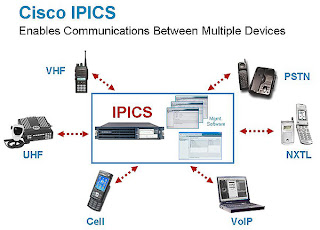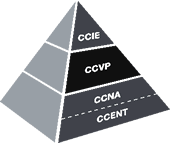ans:
Host B must wait until it is certain that Host A has completed sending its frame.
2) Ethernet operates at which layers of the OSI model? (Choose two.)
ans:
Physical layer
Data-link layer
3) Which of the following describe interframe spacing? (Choose two.)
ans:
the minimum interval, measured in bit-times, that any station must wait before sending another frame
the time allowed for slow stations to process a frame and prepare for the next frame
4) What three primary functions does data link layer encapsulation provide? (Choose three.)
ans:
addressing
error detection
frame delimiting
5) When a collision occurs in a network using CSMA/CD, how do hosts with data to transmit respond after the backoff period has expired?
ans:
The hosts return to a listen-before-transmit mode. <—
6) What are three functions of the upper data link sublayer in the OSI model? (Choose three.)
ans:
identifies the network layer protocol
makes the connection with the upper layers
insulates network layer protocols from changes in physical equipment
7) What does the IEEE 802.2 standard represent in Ethernet technologies?
ans:
Logical Link Control sublayer
ans:
A random delay helps prevent the stations from experiencing another collision during the transmission.
9.Refer to the exhibit. Which option correctly identifies content that the frame data field may contain?
ans:
network layer packet
10) Host A has an IP address of 172.16.225.93 and a mask of 255.255.248.0. Host A needs to communicate with a new host whose IP is 172.16.231.78. Host A performs the ANDing operation on the destination address. What two things will occur? (Choose two.)
ans:
Host A will broadcast an ARP request for the MAC of the destination host.
A result of 172.16.225.255 will be obtained.
11) Which of the following is a drawback of the CSMA/CD access method?
ans:
Collisions can decrease network performance.
12) Ethernet operates at which layer of the TCP/IP network model?
ans:
network access
13) What is the primary purpose of ARP?
ans:
resolve IPv4 addresses to MAC addresses
14) Refer to the exhibit. The switch and workstation are administratively configured for full-duplex operation. Which statement accurately reflects the operation of this link?
ans:
No collisions will occur on this link.
15) Refer to the exhibit. Host_A is attempting to contact Server_B. Which statements correctly describe the addressing Host_A will generate in the process? (Choose two.)
ans:
A frame with the destination MAC address of Router_A.
A packet with the destination IP of Server_B.
16) Which statements correctly describe MAC addresses? (Choose three.)
ans:
copied into RAM during system startup
contains a 3 byte OUI
6 bytes long
17) Which two features make switches preferable to hubs in Ethernet-based networks? (Choose two.)
ans:
minimizing of collisions
increase in the throughput of communications
18) What are the two most commonly used media types in Ethernet networks today? (Choose two.)
ans:
copper UTP
optical fiber
19) Convert the binary number 10111010 into its hexadecimal equivalent. Select the correct answer from the list below.
ans:
BA
20) After an Ethernet collision, when the backoff algorithm is invoked, which device has priority to transmit data?
ans:
any device in the collision domain whose backoff timer expires first
21) Host A has an IP address of 172.16.225.93, a mask of 255.255.248.0, and a default gateway of 172.16.224.1. Host A needs to send a packet to a new host whose IP is 172.16.231.78. Host A performs the ANDing operation on its address and subnet mask. What two things will occur? (Choose two.)
ans:
Host A will broadcast an ARP request for the MAC of the host 172.16.231.78.
Host A will change the destination IP of the packet to 172.16.224.1 and forward the packet.

